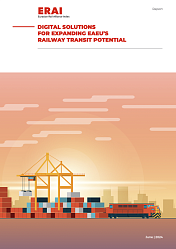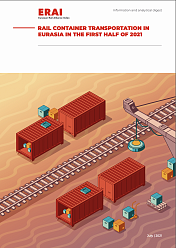The convergence of management approaches to expanding the regional transport and logistics system may play a decisive role in broadening and deepening Eurasian economic integration
Thanks!
We will contact you.


The convergence of management approaches to expanding the regional transport and logistics system may play a decisive role in broadening and deepening Eurasian economic integration

The Trans-Caspian International Transport Route has developed significantly in recent years as one of the routes for freight traffic between China and Europe

Far from a one-off undertaking, the digital transformation is a continuous effort to adapt the transport infrastructure to the evolving technological capabilities and requirements.

In the face of changes in the international political situation, developing transport corridors in Eurasia has become a matter of vital importance.
Investment projects, cooperation, trends and forecasts of industry infrastructure in the Eurasian region
Investment projects, cooperation, trends and forecasts of industry infrastructure in the Eurasian region
